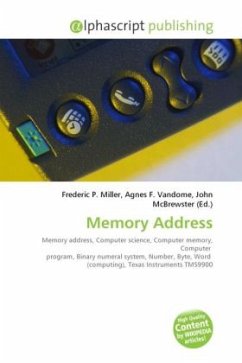In computer science, a memory address is an identifier for a memory location, at which a computer program or a hardware device can store data and later retrieve it. Generally this is a binary number from a finite monotonically ordered sequence that uniquely describes the memory itself.In modern byte-addressable computers, each address identifies a single byte of storage; data too large to be stored in a single byte may reside in multiple bytes occupying a sequence of consecutive addresses. Some microprocessors were designed to be word-addressable, so that the addressable storage unit was larger than a byte. Both the Texas Instruments TMS9900 and the National Semiconductor IMP-16, used 16 bit words. The efficiency of addressing of memory depends on the size of the address bus.In a computer program, an absolute address, is a memory address that uniquely identifies a location in memory.This is different from a relative address, that is not unique and specifies a location only in relation to somewhere else. Virtual memory also adds a level of indirection.
Bitte wählen Sie Ihr Anliegen aus.
Rechnungen
Retourenschein anfordern
Bestellstatus
Storno








